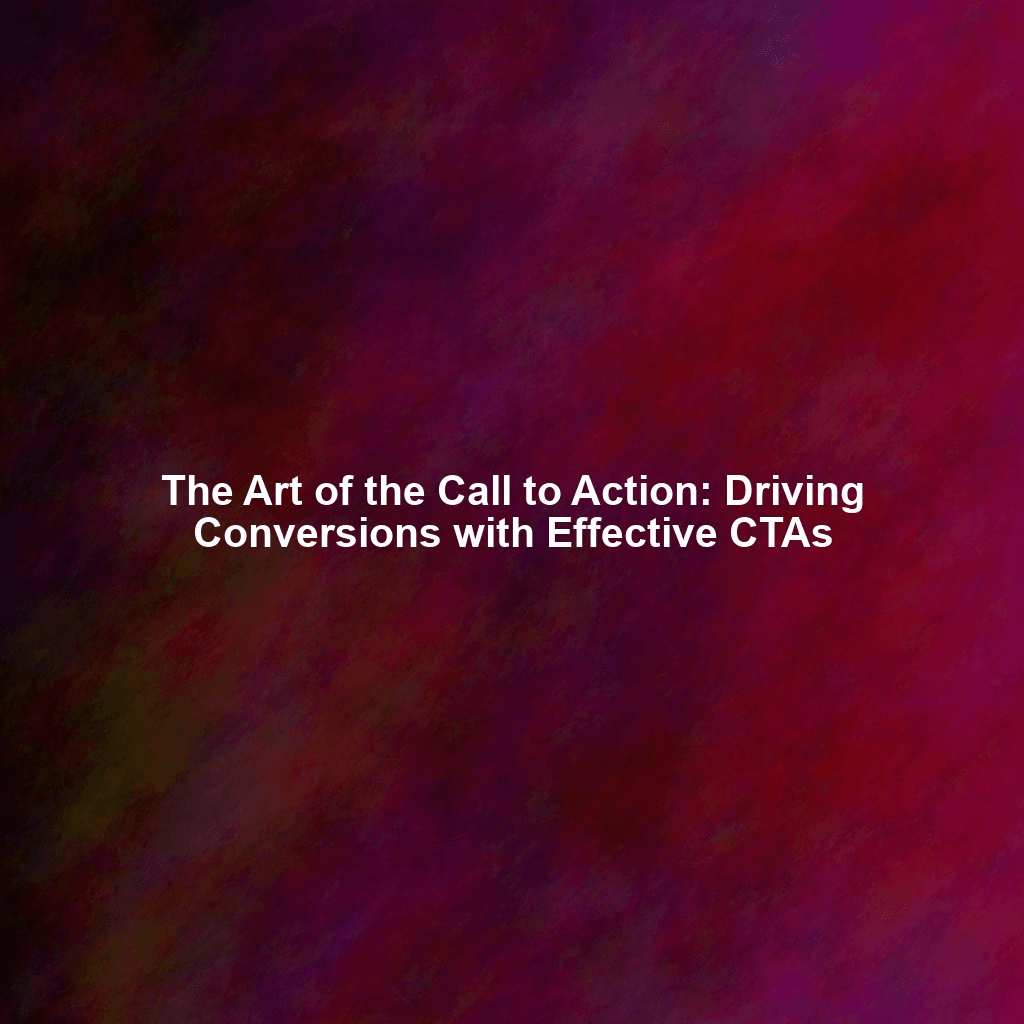In the bustling digital landscape, grabbing attention is only half the battle. You might have stellar content, a beautiful website, and a compelling product, but if you’re not effectively guiding your visitors toward the next step, you’re leaving money on the table. This is where the often-overlooked, yet incredibly powerful, Call to Action (CTA) comes into play. A well-crafted CTA can be the difference between a casual browser and a paying customer. Let’s dive into the art of creating CTAs that convert.
Understanding the Power of a Call to Action
A Call to Action is more than just a button or a link; it’s an invitation, a direction, and a key driver of conversions. It tells your audience exactly what you want them to do next, removing any ambiguity and leading them further down the sales funnel. Without a clear CTA, visitors might get lost, distracted, or simply leave your site without taking any desired action.
Why CTAs are Essential for Marketing Success
- Drive Conversions: CTAs directly encourage users to take actions like subscribing, buying, downloading, or contacting you.
- Guide User Flow: They help users navigate your website or marketing materials in a strategic way.
- Measure Campaign Effectiveness: Tracking CTA clicks and conversions provides valuable insights into campaign performance.
- Improve User Experience: Clear CTAs make it easier for users to find what they’re looking for and achieve their goals.
Crafting Compelling CTAs: Best Practices
Creating effective CTAs isn’t just about slapping a button on your website. It requires careful planning, strategic wording, and thoughtful design.
1. Know Your Audience and Your Goal
Before you start writing, understand who you’re targeting and what you want them to achieve. Tailor your CTA’s message and design to resonate with your target audience’s needs and desires. What’s their biggest pain point? How can your product or service solve it?
2. Use Action-Oriented Language
Your CTA should use strong, actionable verbs that inspire immediate action. Avoid vague or passive phrasing. Here are some examples:
- Instead of: “Learn More” Try: “Discover the Benefits” or “Get Your Free Guide”
- Instead of: “Submit” Try: “Download Now” or “Claim Your Offer”
- Instead of: “Contact Us” Try: “Get a Free Quote” or “Schedule a Consultation”
3. Create a Sense of Urgency
Adding a sense of urgency can significantly boost conversions. Use phrases that highlight scarcity or limited-time offers. Examples:
- “Limited Time Offer!”
- “Sale Ends Soon!”
- “Only [Number] Left in Stock!”
- “Claim Your Spot Before They’re Gone!”
4. Design Matters: Visual Hierarchy and Placement
The design and placement of your CTA are just as important as the words you use. Make sure your CTA stands out from the surrounding content.
- Color: Use contrasting colors that draw the eye. A/B test different color combinations to see what performs best.
- Size and Shape: Ensure the CTA is large enough to be easily visible but not so large that it overwhelms the page. Use shapes that naturally draw attention, like rounded rectangles.
- Placement: Strategically place your CTAs where users are most likely to see them. Common locations include above the fold, within blog posts, at the end of videos, and on landing pages.
- White Space: Surround your CTA with ample white space to make it stand out even more.
5. A/B Test Everything
The only way to know for sure what works best for your audience is to A/B test different versions of your CTAs. Experiment with different wording, colors, sizes, and placements. Track the results and iterate based on the data. Tools like Google Optimize, Optimizely, and VWO can help you run these tests efficiently.
Examples of Effective CTAs
- Netflix: “Join Free for a Month” – Clear, benefit-driven, and time-limited.
- Spotify: “Get Spotify Free” – Simple, direct, and emphasizes the “free” aspect.
- Amazon: “Add to Cart” – Classic, instantly recognizable, and directly tied to purchase.
- HubSpot: Often uses contextually relevant CTAs within their blog content, like “Download Your Free Template” or “Get a Free Marketing Assessment”.
Common CTA Mistakes to Avoid
- Being Too Vague: “Click Here” or “Submit” offer little insight into what the user will get.
- Using Overly Technical Jargon: Keep it simple and easy to understand.
- Ignoring Mobile Users: Ensure your CTAs are easily clickable on smaller screens.
- Not Tracking Results: Without tracking, you can’t optimize your CTAs for better performance.
Measuring CTA Performance
Tracking the performance of your CTAs is crucial for understanding what’s working and what’s not. Key metrics to monitor include:
- Click-Through Rate (CTR): The percentage of people who see your CTA and click on it.
- Conversion Rate: The percentage of people who click on your CTA and complete the desired action (e.g., make a purchase, fill out a form).
- Bounce Rate: If your CTA leads to a landing page, monitor the bounce rate to see if the page is engaging and relevant.
Use tools like Google Analytics to track these metrics and identify areas for improvement.
Conclusion: Mastering the Art of the CTA
The Call to Action is a critical component of any successful marketing strategy. By understanding your audience, using action-oriented language, creating a sense of urgency, and paying attention to design, you can craft compelling CTAs that drive conversions and achieve your business goals. Remember to continuously test and optimize your CTAs to maximize their effectiveness. Mastering the art of the CTA is an ongoing process, but the rewards are well worth the effort.
 Skip to content
Skip to content

